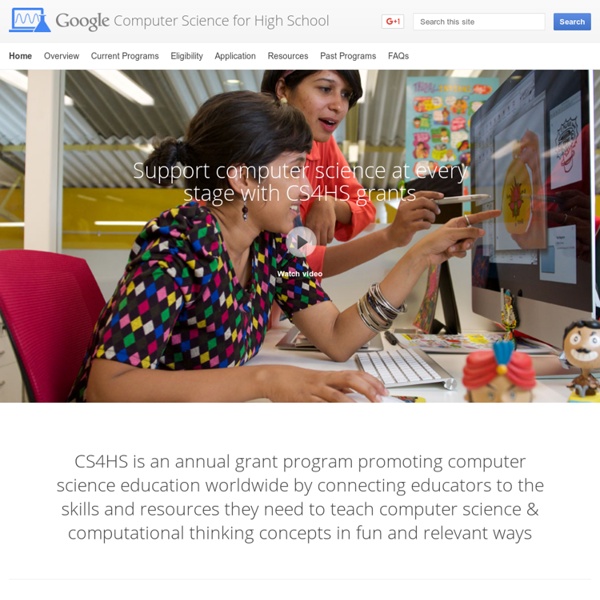



7 directorios internacionales de recursos educativos abiertos #REA #OER Los materiales impresos tienen mayores costes y tiempos de producción y actualización. El soporte digital es multimedial, ahorra costes de publicación y permite más fácilmente la actualización continua y colectiva. Por otra parte, ya sabemos que Internet proporciona un inmenso banco de materiales y fuentes de información que pueden resultar de ayuda en el aula para el aprendizaje de las diversas materias. Para poder utilizarlos, es necesario que sean abiertos, que tengan una licencia que permita su uso (Creative Commons). Los Open Educational Resources (OER), concepto originalmente acuñado en 2002 durante un Foro de UNESCO sobre Open Courseware (OCW), tienen como propósito la provisión, a través de Internet, de recursos educativos para consulta, uso y adaptación de forma libre y abierta. 1. 2. 3. 4. 5. 6. 7. En Wikieducator hay tutoriales sobre búsqueda, creación y uso de recursos educativos abiertos. Autor: José Luis Cabello
Mohawke's Best of the Best Free and Open Source Software Collection: Mac OS X and Windows software Collection Mohawke's Best of the Best Free and Open Source Software Collection from Dark Artistry :: Windows :: Macintosh :: Internet :: Operating Systems :: Games :: Web-Sites :: OSSWIN CD :: For search features you can simply use the search feature in your browser; Ctrl+F or Apple+F - Firefox, or use table toolsIf you need these pages translated check out FoxLingo(This page contains no ads or cookies, but does require a javascript enabled browser for sorting.) Access
Apply Silicon Valley May 3rd, 4th, and 17th, 9am-4pm What do Instagram, Snapchat and Twitter have in common? They were all created by people who knew how to code. Programming is a skill that gives you the ability to create and innovate. That’s what CodeNow is for! We introduce you to programming in a fun and interactive way. Our workshops take place in San Francisco and New York City on the weekends at local tech companies, and are led by top software engineers. We’re currently accepting applications which are due on April 22nd. Still have questions? Trouble viewing the application? <iframe height="500" allowTransparency="true" frameborder="0" scrolling="no" style="width:100%;border:none;"src=" href=" rel="nofollow">Fill out my Wufoo form!
py-scratch - Interface Python with MIT Scratch This package enables communication between Python and Scratch using the remote sensors feature of Scratch. It has been tested using Python 2.6, 2,7 and 3.2 on a Raspberry Pi. Remember to enable remote sensors in Scratch! To do this: Go to Sensing Right-click on a 'sensor value' Select 'enable remote sensor connections' import scratch s = scratch.Scratch() # to make a broadcast to scratch s.broadcast("from python") # send sensor updates to scratch data = {} data['pyvar'] = 123 for data['pycounter'] in range(60): s.sensorupdate(data) 40 herramientas para aplicar la metodología flipped classroom en el aula [Infografía] La pedagogía inversa o flipped classroom es una de las metodologías educativas que más revuelo están causando. Desde que los profesores de química Jonathan Bergmann and Aaron Sams la llevaran a la práctica por primera vez en las aulas del instituto Woodland Park High School, en Woodland Park, Colorado (Estados Unidos), ha ido sumando seguidores de manera progresiva. Este nuevo modelo de enseñanza propone darle la vuelta a la case, de modo que los alumnos adquieren los conceptos teóricos en casa, a través de la visualización de un video, una presentación o cualquier otro recurso; y después, en clase, resuelven sus dudas y trabajan de forma individual y colaborativa. Si quieres innovar y llevar a la práctica esta metodología, te recomendamos 40 herramientas que te servirán para poner tu clase del revés. Descarga en PDF la infografía “40 Herramientas para aplicar la metodología Flipped Classroom en el aula” Crear videolecciones o videos interactivos 1. 2. 3. 4. 5. 6. 7. 8. 9. 10. 11. 12.
student designs Gamestar Mechanic Kindergarten coders can program before they can read - 26 July 2013 Going back to school to meet the 4-year-olds who are learning to program computers thanks to a new graphics-based coding language LORNA is 4, going on 5. I've never met her before, but her eyes light up when she sees me. She rushes over, blonde curls bouncing. "I'm going to sit on you!" she declares. I hand her the iPad I'm carrying and the silliness melts away in an instant. Lorna and her classmates, who range in age from 4 to 7, are taking part in a pilot study here at Tufts University in Medford, Massachusetts, to see how young children respond to ScratchJr, a spin-off of the Scratch programming language. Tools like Scratch aim to address what their developers see as a lack of computer programming instruction in schools today. Unlike typical programming languages, which require users to type in complicated text commands, Scratch uses coloured blocks that are strung together to create lines of code. Concepts become more complex as the child progresses. Building with blocks